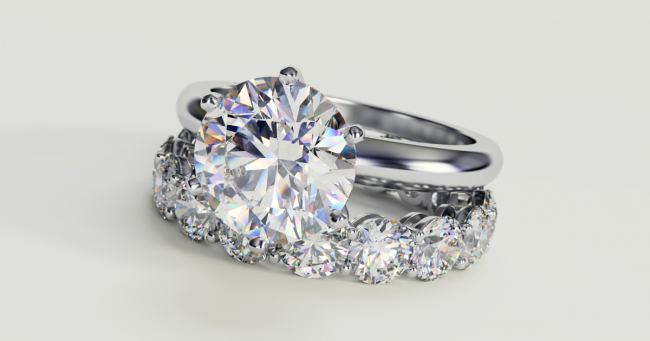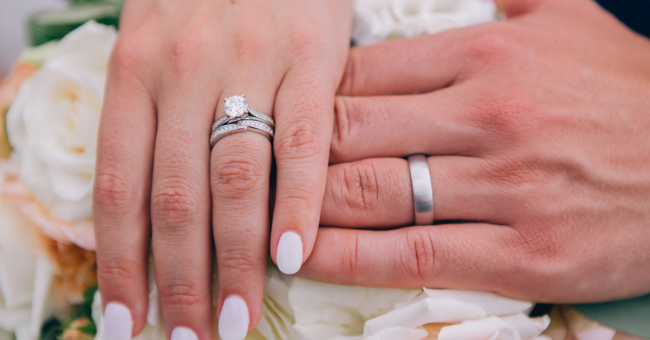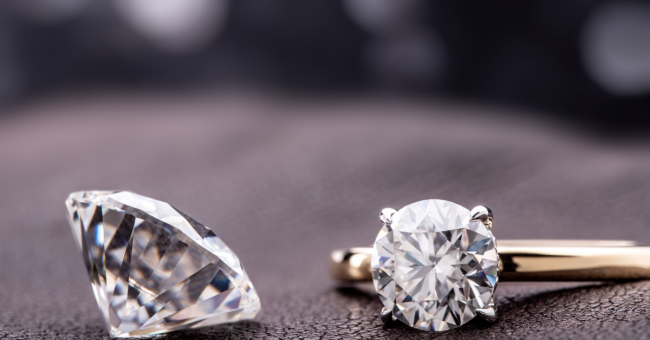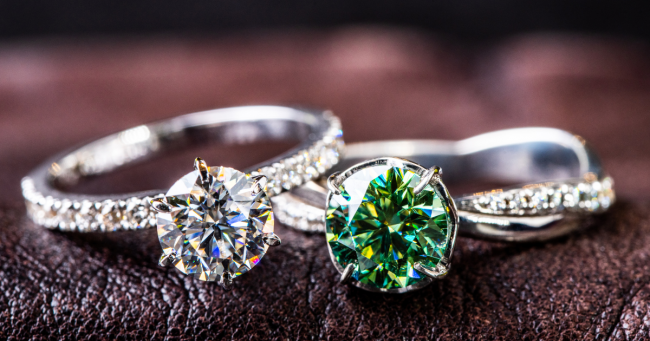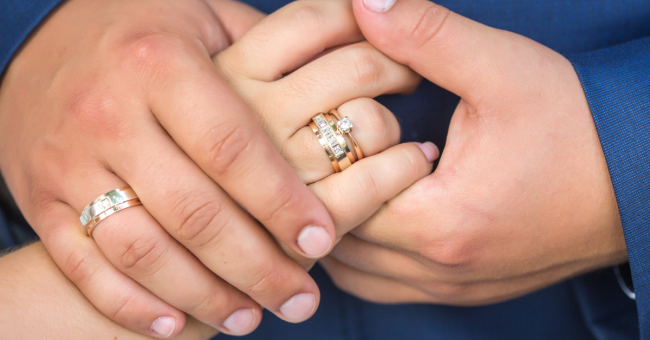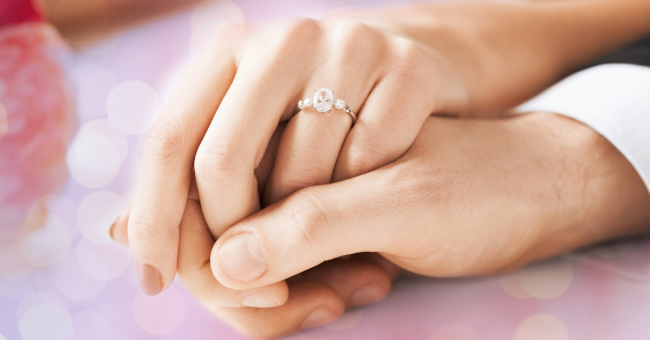A diamond wedding ring is one of the most significant purchases you'll make in your lifetime. It's a symbol of love and commitment that you'll wear every day, so it's essential to choose a ring that suits your style, budget, and needs. In this article, we'll provide tips and advice on how to select the perfect wedding ring.
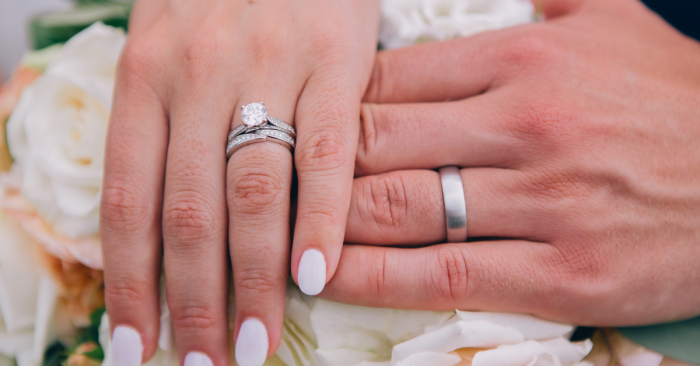
Determine Your Budget
Before you start looking for a wedding ring, it's important to determine your budget. A diamond wedding ring can cost anywhere from a few hundred dollars to tens of thousands of dollars, depending on the quality of the diamond and the ring's design. By setting a budget, you'll be able to narrow down your options and find a ring that fits within your price range.
Visit https://llprivatejewellers.com/collections/diamond-wedding-rings for affordable custom designed wedding rings available in both Natural and Lab Grown Diamonds!
Understand the 4 Cs
When selecting a diamond wedding ring, it's important to understand the 4 Cs: carat weight, cut, color, and clarity. These characteristics determine the diamond's quality and value.
Carat weight: Carat weight refers to the diamond's size and weight. A one-carat diamond is equivalent to 0.2 grams. The larger the diamond, the more expensive it will be.
Cut: Cut refers to the diamond's proportions, symmetry, and polish. A well-cut diamond will reflect light and sparkle more brilliantly than a poorly cut diamond.
Color: Diamonds are graded on a color scale from D (colorless) to Z (yellow or brown). Colorless diamonds are the most valuable and rare.
Clarity: Clarity refers to the presence of inclusions or blemishes in the diamond. A diamond with fewer inclusions or blemishes is more valuable.
Understanding the 4 Cs will help you make an informed decision when selecting a diamond wedding ring. It's important to balance the 4 Cs based on your personal preferences and budget.
Consider the Setting
The setting is the part of the ring that holds the diamond in place. The setting you choose can significantly impact the overall look of the ring. Common setting styles include prong, bezel, pave, and channel.
Prong setting: In a prong setting, small metal prongs hold the diamond in place. This setting allows more light to enter the diamond, making it appear more brilliant.
Bezel setting: In a bezel setting, the diamond is surrounded by a metal rim that holds it in place. This setting offers more protection to the diamond but can make it appear smaller.
Pave setting: In a pave setting, small diamonds are set closely together to create a continuous sparkle. This setting is popular for its elegant and glamorous look.
Channel setting: In a channel setting, diamonds are set within a channel of metal. This setting offers excellent protection to the diamonds and creates a sleek and modern look.
Consider the style and durability of the setting when choosing a diamond wedding ring. A prong setting offers more brilliance, but a bezel setting provides more protection. A pave or channel setting offers a continuous sparkle, but it may require more maintenance.
Choose a Diamond Shape
Diamonds come in various shapes, including round, princess, emerald, and oval. The shape you choose can impact the overall appearance and style of the ring. Consider your personal style and preferences when selecting a diamond shape.
Round: Round diamonds are the most popular shape for diamond wedding rings. They offer maximum brilliance and sparkle.
Princess: Princess diamonds are square-shaped and offer a modern and sleek look.
Emerald: Emerald diamonds have a rectangular shape and offer a vintage and elegant look.
Oval: Oval diamonds offer a unique and elongated shape that can make the fingers appear longer and more slender.
Pear: This diamond shape is teardrop-shaped and provides a feminine and graceful look that is popular for engagement and wedding rings.
Cushion: This diamond shape is square or rectangular with rounded corners. It provides a vintage and romantic look that is popular for antique-style wedding rings.
Consider the diamond shape that best suits your personal style and preferences.
Choose a Metal
The metal you choose for your diamond wedding ring can significantly impact the ring's overall appearance and durability. The most popular metals for diamond wedding rings are platinum, white gold, yellow gold, and rose gold.
Platinum: Platinum is a dense and durable metal that is highly resistant to wear and tear. It has a natural white luster that complements the brilliance of diamonds. Platinum is the most expensive metal for diamond wedding rings.
White gold: White gold is a popular choice for diamond wedding rings because of its versatility and affordability. It has a similar look to platinum but is less dense and less expensive.
Yellow gold: Yellow gold is a classic and traditional choice for diamond wedding rings. It has a warm and rich color that complements diamonds of all colors.
Rose gold: Rose gold has become increasingly popular for diamond wedding rings in recent years. It has a unique and romantic look that complements the feminine beauty of diamonds.
Consider your personal style, skin tone, and budget when selecting a metal for your diamond wedding ring.
Try on Different Rings
Once you have considered all of the above factors, it's time to try on different diamond wedding rings to see how they look and feel on your finger. Trying on rings can help you get a better sense of the ring's size, comfort, and overall appearance. It can also help you visualize how the ring will look on your hand.
Visit different jewelry stores and try on a variety of diamond wedding rings. Consider bringing a trusted friend or family member for a second opinion. Take your time and don't feel pressured to make a decision right away. Choosing a diamond wedding ring is a significant investment, and it's important to take the time to find the perfect one.
Think About Maintenance and Insurance
A diamond wedding ring is an investment that should be protected. Consider the maintenance and insurance costs when selecting a diamond wedding ring. Most jewelers offer warranties and insurance options to protect your ring against damage, theft, and loss. Regular maintenance, such as cleaning and polishing, can also help keep your diamond wedding ring looking its best.
Conclusion
Choosing the perfect diamond wedding ring requires careful consideration of your budget, the 4 Cs, the setting, diamond shape, metal, and maintenance and insurance costs. Take the time to research and try on different styles to find a ring that suits your personal style and preferences. A diamond wedding ring is a symbol of love and commitment that you'll cherish for a lifetime, so it's important to choose a ring that makes you happy and reflects your love story.

